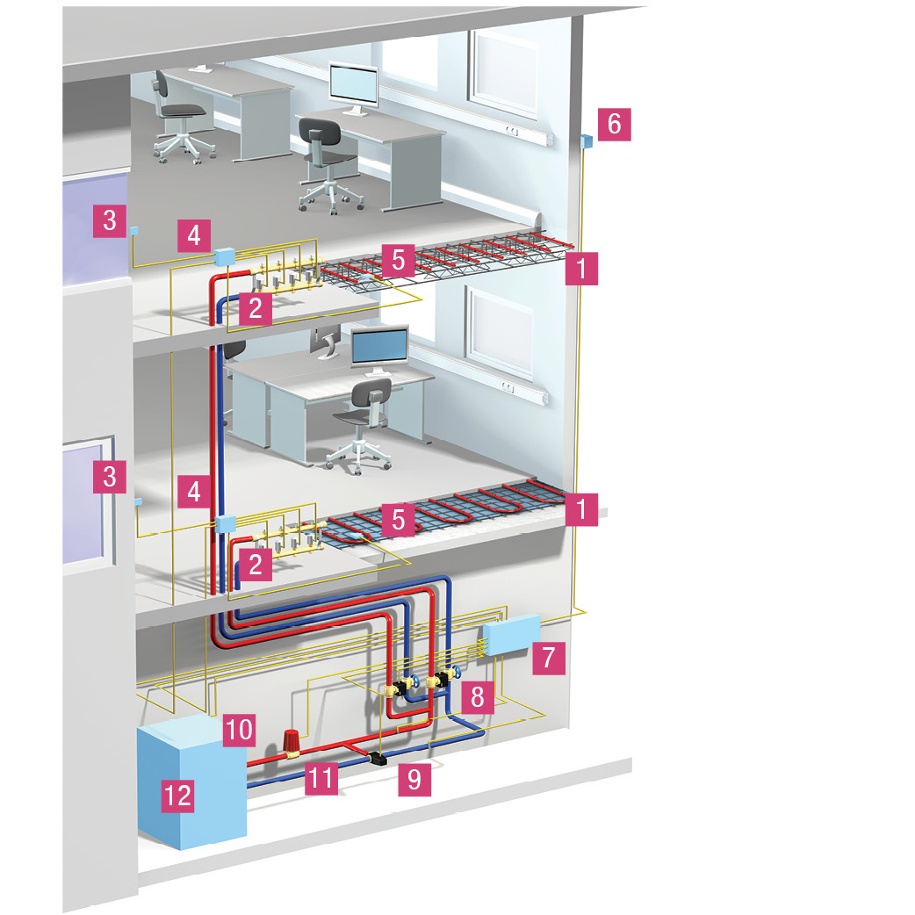An Innovative Approach to High Efficiency Cooling
How refreshing it is to step inside a comfortably cool space on a sweltering hot day. But this comfortable cool is often elusive, despite the high dollars we spend trying to attain it. Most traditional forced-air cooling systems produce uneven room temperatures. They can also contribute to poor air quality by distributing airborne contaminants, making a space unhealthy and uncomfortable.
By circulating cooled water through pipes embedded in your building’s structure, radiant cooling evenly absorbs heat energy from a room, eliminating drafts and hot spots. A radiant cooling system is typically designed in conjunction with radiant heating, and achieves best results when combined with other energy-efficient systems in tight building structures. Radiant cooling may handle the entire cooling load or be used to cover the base loads in traditional cooling applications. Since radiant cooling solutions can improve air quality, they are ideal in buildings such as hospitals and nursing homes where air quality is critical.
Radiant cooling is an innovative approach to comfortable, high-efficiency cooling. The technology is basically the same as radiant heating. RAUTHERM S pipe is installed in floors, walls, or ceilings and circulates chilled water. Radiant cooling is most effective when used in conjunction with other energy-reducing systems.
- Cooling is more evening distributed; drafts are eliminated
- Pipes are embedded in floors, walls or ceilings depending upon requirements
- Requires air movement and dehumidification equipment as part of the system
- Temperature can be controlled by individual room
Benefits
Just as ground temperatures keep the walls of your basement slightly cooler and therefore absorb heat from the rooms, a radiant system embedded in your building structure can have a similar effect, providing even, comfortable cooling to your space.
Reduces Life Cycle Costs
Compared to a traditional forced-air system, radiant cooling has a lower operating cost, due to the superior heat transfer properties of water. The installation of a radiant cooling system may also lead to a significant reduction in forced-air system components and ductwork costs.
Improves Energy Efficiency
Compared to traditional systems, radiant cooling operates with moderate water temperatures, allowing you to raise your thermostat a few degrees while still maintaining the same level of cooling. This can lead to a significant reduction of energy consumption and carbon footprint. The efficiency of a radiant cooling system can be even further enhanced with the integration of a water-to-water geothermal heat pump system (see Tab 4 for more information).
Increases Thermal Comfort
The human body feels at its best when it can regulate at least 50 percent of its heat emission via radiation. Radiant cooling optimizes the surface temperature of the occupants’ surroundings, providing a comfortable environment while minimizing drafts and ventilation noise.


